-
 Bitcoin
Bitcoin $115000
0.12% -
 Ethereum
Ethereum $3701
4.50% -
 XRP
XRP $3.081
2.99% -
 Tether USDt
Tether USDt $0.0000
-0.01% -
 BNB
BNB $767.9
1.45% -
 Solana
Solana $169.5
3.13% -
 USDC
USDC $0.9999
0.01% -
 Dogecoin
Dogecoin $0.2106
4.30% -
 TRON
TRON $0.3334
1.62% -
 Cardano
Cardano $0.7564
2.54% -
 Stellar
Stellar $0.4165
0.76% -
 Hyperliquid
Hyperliquid $38.75
0.25% -
 Sui
Sui $3.593
3.00% -
 Chainlink
Chainlink $17.08
3.59% -
 Bitcoin Cash
Bitcoin Cash $573.6
4.35% -
 Hedera
Hedera $0.2508
-0.84% -
 Avalanche
Avalanche $23.07
6.46% -
 Ethena USDe
Ethena USDe $1.001
-0.02% -
 Litecoin
Litecoin $120.8
8.17% -
 UNUS SED LEO
UNUS SED LEO $8.943
-0.32% -
 Toncoin
Toncoin $3.400
-5.60% -
 Shiba Inu
Shiba Inu $0.00001255
1.54% -
 Uniswap
Uniswap $9.908
6.32% -
 Polkadot
Polkadot $3.718
2.10% -
 Monero
Monero $303.0
-0.74% -
 Dai
Dai $0.9999
-0.02% -
 Bitget Token
Bitget Token $4.392
0.91% -
 Cronos
Cronos $0.1403
6.31% -
 Pepe
Pepe $0.00001076
1.13% -
 Aave
Aave $267.2
1.80%
How to understand the Merkle Tree in blockchain?
Merkle Trees in blockchain ensure data integrity and efficiency by allowing quick verification of transactions using a Merkle Path, enhancing security and scalability.
Apr 17, 2025 at 02:42 am
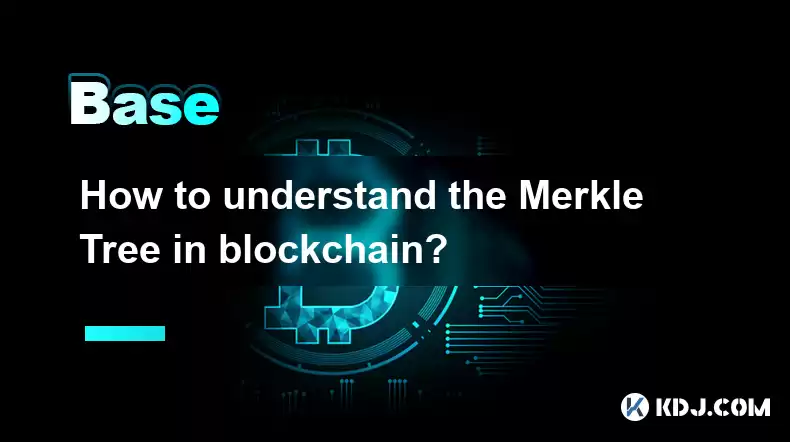
Understanding the Merkle Tree in blockchain is crucial for grasping how data integrity and efficiency are maintained in decentralized systems. The Merkle Tree, named after Ralph Merkle who patented it in 1979, is a fundamental component of blockchain technology, particularly in Bitcoin and other cryptocurrencies. It serves as a data structure that efficiently and securely verifies the contents of large data sets.
What is a Merkle Tree?
A Merkle Tree, also known as a binary hash tree, is a tree in which every leaf node is a hash of a block of data, and every non-leaf node is a hash of its children. This structure allows for efficient and secure verification of the contents of large data sets. In the context of blockchain, each block contains a Merkle Tree that summarizes all the transactions included in that block.
The root of the Merkle Tree, known as the Merkle Root, is stored in the block header. This root is a single hash that represents all the transactions in the block. By using this structure, it becomes possible to verify whether a specific transaction is included in a block without needing to download the entire block.
How Does a Merkle Tree Work?
To understand how a Merkle Tree works, let's break down the process step-by-step:
- Start with Transactions: Begin with a set of transactions that need to be included in a block. Each transaction is hashed individually.
- Pair and Hash: The hashes of these transactions are then paired and hashed together to form a new set of hashes.
- Repeat the Process: This pairing and hashing process continues until only one hash remains, which is the Merkle Root.
- Merkle Path: To verify a specific transaction, a Merkle Path (also known as a Merkle Proof) is used. This path consists of the hashes needed to reconstruct the Merkle Root from the transaction in question.
For example, if you want to verify transaction A, you would need the hashes of the sibling nodes at each level of the tree to reconstruct the Merkle Root. If the reconstructed root matches the one stored in the block header, you can be sure that transaction A is indeed part of the block.
Benefits of Using Merkle Trees in Blockchain
The use of Merkle Trees in blockchain technology offers several significant benefits:
- Efficiency: Merkle Trees allow for quick and efficient verification of large data sets. Instead of downloading an entire block, a node can verify a transaction using only a small portion of the data.
- Security: The structure of a Merkle Tree ensures that any alteration to a transaction will result in a different Merkle Root. This makes it extremely difficult to tamper with transactions without being detected.
- Scalability: As the number of transactions in a block grows, the Merkle Tree structure remains efficient. It scales well with increasing data size, making it suitable for large-scale blockchain networks.
Practical Example of Merkle Tree in Bitcoin
In Bitcoin, each block contains a Merkle Tree that summarizes all the transactions included in that block. Here's how it works in practice:
- Transaction Hashing: Each transaction in the block is hashed using the SHA-256 algorithm.
- Building the Tree: These hashes are then paired and hashed together to form the next level of the tree. This process continues until the Merkle Root is formed.
- Verification: To verify a transaction, a node requests the Merkle Path for that transaction. Using this path, the node can reconstruct the Merkle Root and compare it with the one stored in the block header.
For instance, if a user wants to verify a transaction in a Bitcoin block, they would request the Merkle Path from a full node. The full node would provide the necessary hashes, and the user could then verify the transaction's inclusion in the block.
Implementing a Merkle Tree
To implement a Merkle Tree, you can follow these steps:
- Hash the Data: Start by hashing each piece of data (e.g., transactions) using a cryptographic hash function like SHA-256.
- Pair and Hash: Pair the hashes and hash them together. If there is an odd number of hashes, duplicate the last hash to make it even.
- Continue Pairing: Continue pairing and hashing until you reach the top of the tree, resulting in the Merkle Root.
- Store the Tree: Store the Merkle Tree structure, including all intermediate hashes, to allow for efficient verification later.
Here's a simple example of how to create a Merkle Tree in Python:
import hashlibdef hash_data(data):
return hashlib.sha256(data.encode('utf-8')).hexdigest()
def create_merkle_tree(transactions):
if len(transactions) == 0:
return '0' * 64 # Return a hash of zeros for an empty tree
while len(transactions) > 1:
new_level = []
for i in range(0, len(transactions), 2):
if i + 1 < len(transactions):
combined_hash = hash_data(transactions[i] + transactions[i + 1])
else:
combined_hash = hash_data(transactions[i] + transactions[i])
new_level.append(combined_hash)
transactions = new_level
return transactions[0] # The Merkle Root
Example usage
transactions = ['tx1', 'tx2', 'tx3', 'tx4']
merkle_root = create_merkle_tree(transactions)
print(f'Merkle Root: {merkle_root}')
Verifying Transactions with Merkle Paths
To verify a transaction using a Merkle Path, follow these steps:
- Request the Merkle Path: Ask a full node for the Merkle Path of the transaction you want to verify.
- Reconstruct the Merkle Root: Use the Merkle Path to reconstruct the Merkle Root from the transaction hash.
- Compare with Block Header: Compare the reconstructed Merkle Root with the one stored in the block header. If they match, the transaction is verified.
Here's a simple example of how to verify a transaction using a Merkle Path in Python:
def verify_transaction(transaction_hash, merkle_path, merkle_root):current_hash = transaction_hash
for hash in merkle_path:
if current_hash < hash:
current_hash = hash_data(current_hash + hash)
else:
current_hash = hash_data(hash + current_hash)
return current_hash == merkle_root
Example usage
transaction_hash = 'tx1_hash'
merkle_path = ['hash1', 'hash2', 'hash3']
merkle_root = 'root_hash'
is_verified = verify_transaction(transaction_hash, merkle_path, merkle_root)
print(f'Transaction Verified: {is_verified}')
Frequently Asked Questions
Q: Can Merkle Trees be used in other applications outside of blockchain?
A: Yes, Merkle Trees are versatile and can be used in various applications beyond blockchain. They are used in peer-to-peer networks for file sharing, in data synchronization protocols, and in distributed systems for efficient data verification.
Q: How does the Merkle Tree contribute to the security of a blockchain?
A: The Merkle Tree enhances blockchain security by ensuring that any alteration to a transaction will result in a different Merkle Root. This makes it extremely difficult to tamper with transactions without being detected, as the altered Merkle Root would not match the one stored in the block header.
Q: What happens if a block contains an odd number of transactions?
A: If a block contains an odd number of transactions, the last hash at each level of the Merkle Tree is duplicated to ensure that the pairing process can continue. This duplication does not affect the integrity or security of the Merkle Tree.
Q: How does the size of a Merkle Tree affect its efficiency?
A: The size of a Merkle Tree does not significantly affect its efficiency. The logarithmic nature of the tree structure means that the number of hashes needed to verify a transaction grows slowly with the number of transactions, making it highly efficient even for large data sets.
Disclaimer:info@kdj.com
The information provided is not trading advice. kdj.com does not assume any responsibility for any investments made based on the information provided in this article. Cryptocurrencies are highly volatile and it is highly recommended that you invest with caution after thorough research!
If you believe that the content used on this website infringes your copyright, please contact us immediately (info@kdj.com) and we will delete it promptly.
- Velo Universe, DEX, and DeFi Security: Navigating the Future of Decentralized Trading
- 2025-08-05 09:25:13
- Bitget Wallet Revolutionizes Solana with Gas-Free Transactions: A New Era for DeFi
- 2025-08-05 09:25:13
- Ozak AI, Crypto Boom, and ROI Potential: Is This the Next Big Thing?
- 2025-08-05 09:25:24
- Solana's ETF Hopes & the All-Time High Chase: Is SOL Set to Soar?
- 2025-08-05 09:25:24
- Coinbase's Brian Armstrong and the Art of Focused Work: A Deep Dive
- 2025-08-05 09:25:30
- Uniswap Price Prediction: Bullish Reversal on the Horizon?
- 2025-08-05 09:25:30
Related knowledge
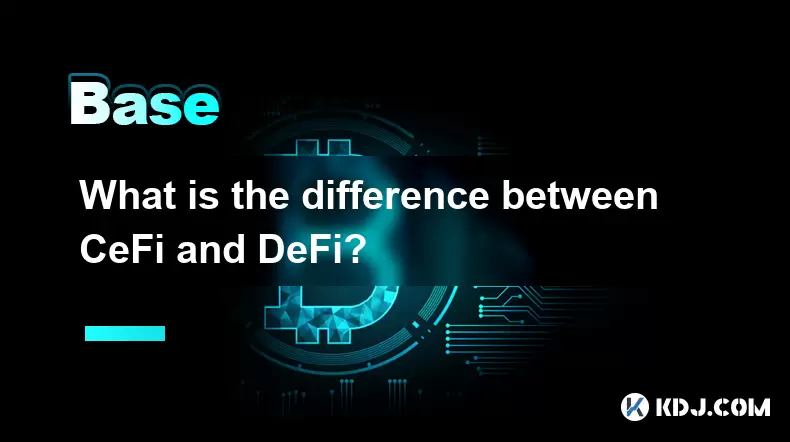
What is the difference between CeFi and DeFi?
Jul 22,2025 at 12:28am
Understanding CeFi and DeFiIn the world of cryptocurrency, CeFi (Centralized Finance) and DeFi (Decentralized Finance) represent two distinct financia...

How to qualify for potential crypto airdrops?
Jul 23,2025 at 06:49am
Understanding What Crypto Airdrops AreCrypto airdrops refer to the distribution of free tokens or coins to a large number of wallet addresses, often u...
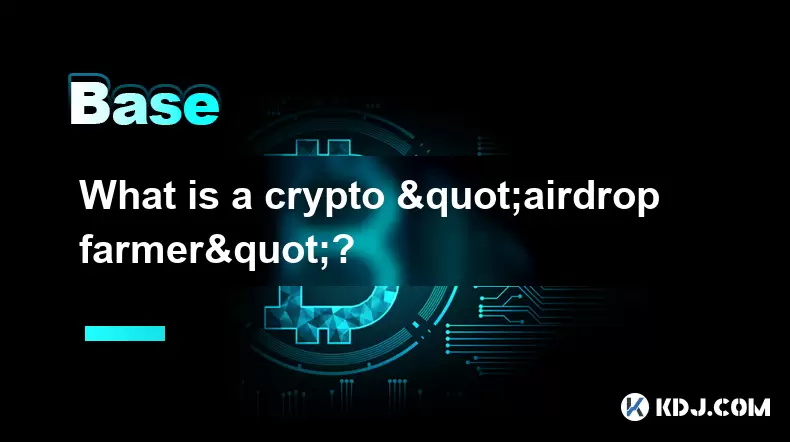
What is a crypto "airdrop farmer"?
Jul 24,2025 at 10:22pm
Understanding the Role of a Crypto 'Airdrop Farmer'A crypto 'airdrop farmer' refers to an individual who actively participates in cryptocurrency airdr...
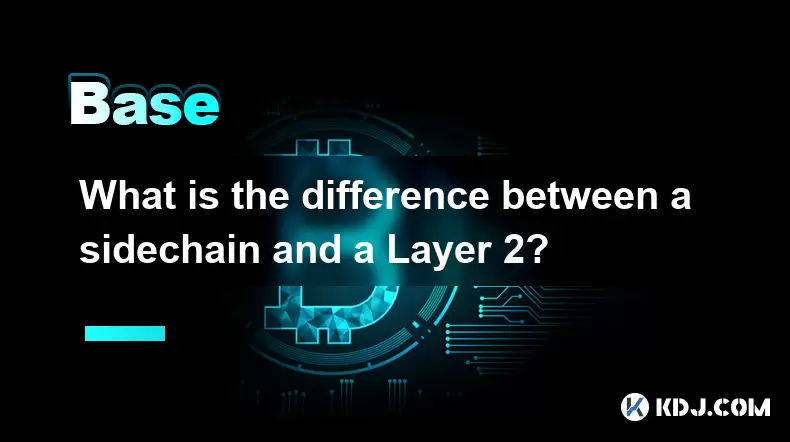
What is the difference between a sidechain and a Layer 2?
Jul 20,2025 at 11:35pm
Understanding the Concept of SidechainsA sidechain is a separate blockchain that runs parallel to the main blockchain, typically the mainnet of a cryp...

What is the Inter-Blockchain Communication Protocol (IBC)?
Jul 19,2025 at 10:43am
Understanding the Inter-Blockchain Communication Protocol (IBC)The Inter-Blockchain Communication Protocol (IBC) is a cross-chain communication protoc...
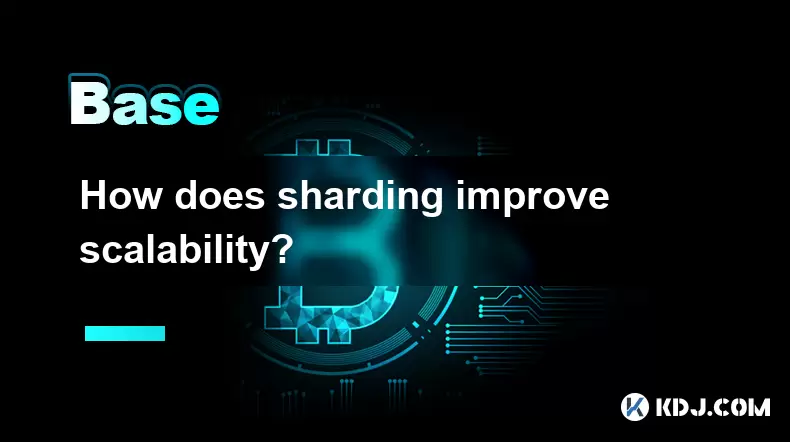
How does sharding improve scalability?
Jul 20,2025 at 01:21am
Understanding Sharding in BlockchainSharding is a database partitioning technique that is increasingly being adopted in blockchain technology to enhan...

What is the difference between CeFi and DeFi?
Jul 22,2025 at 12:28am
Understanding CeFi and DeFiIn the world of cryptocurrency, CeFi (Centralized Finance) and DeFi (Decentralized Finance) represent two distinct financia...

How to qualify for potential crypto airdrops?
Jul 23,2025 at 06:49am
Understanding What Crypto Airdrops AreCrypto airdrops refer to the distribution of free tokens or coins to a large number of wallet addresses, often u...

What is a crypto "airdrop farmer"?
Jul 24,2025 at 10:22pm
Understanding the Role of a Crypto 'Airdrop Farmer'A crypto 'airdrop farmer' refers to an individual who actively participates in cryptocurrency airdr...

What is the difference between a sidechain and a Layer 2?
Jul 20,2025 at 11:35pm
Understanding the Concept of SidechainsA sidechain is a separate blockchain that runs parallel to the main blockchain, typically the mainnet of a cryp...

What is the Inter-Blockchain Communication Protocol (IBC)?
Jul 19,2025 at 10:43am
Understanding the Inter-Blockchain Communication Protocol (IBC)The Inter-Blockchain Communication Protocol (IBC) is a cross-chain communication protoc...

How does sharding improve scalability?
Jul 20,2025 at 01:21am
Understanding Sharding in BlockchainSharding is a database partitioning technique that is increasingly being adopted in blockchain technology to enhan...
See all articles

























































































